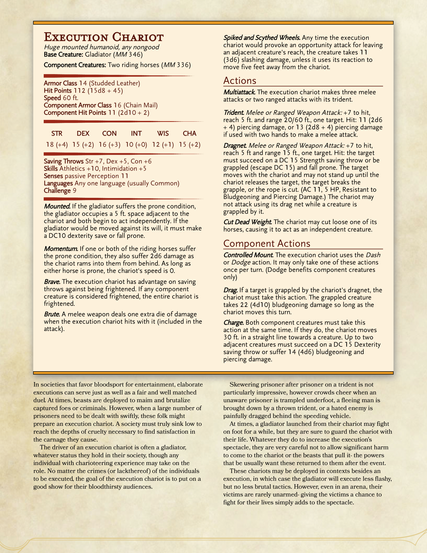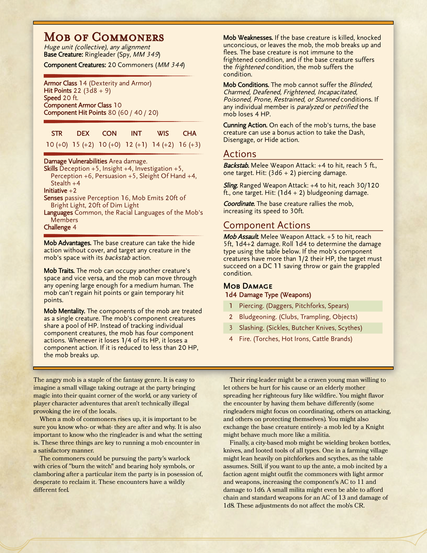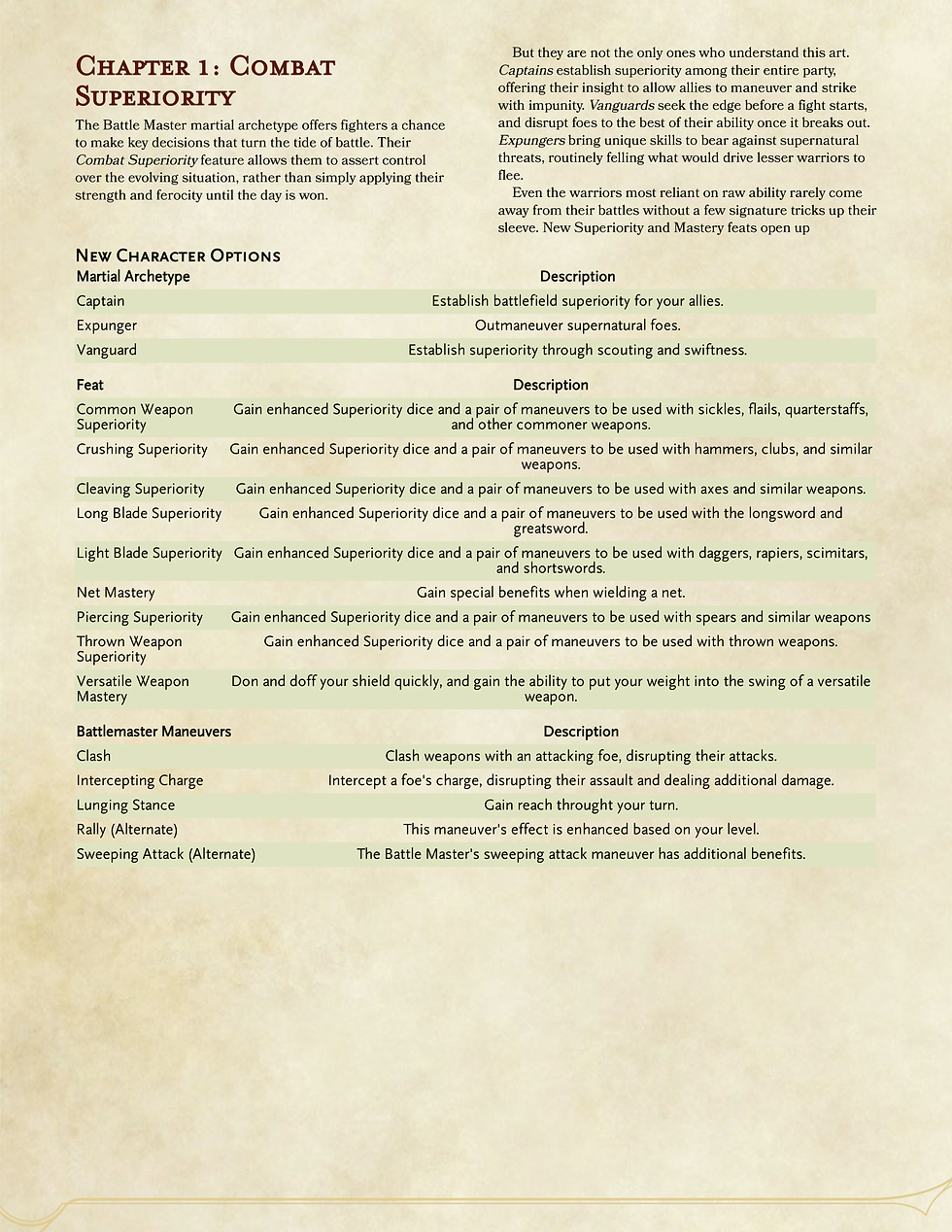Paragon and Unit Monsters
- The Forgemaster

- Dec 14, 2020
- 3 min read
(Scroll straight to the bottom for Images of the statblocks and a PDF download!)
Let's talk monsters for a moment. Most of us know of DnD's boss monster problem- no matter how strong an individual creature is, facing off against four other creatures who can combo their actions is a losing proposition. Especially because- even assuming that your boss creature wins the initiative, it still has to survive four incoming actions before it gets another go. But I'm not going to go into that, because there's an even bigger problem.
Boss monsters just stand there doing nothing as they die.
Of course, I'd be remiss not to acknowledge that Legendary Creatures provide a fine solution to both problems- but they're also overwhelming for PCs. They can Just Say No to most debilitating effects and they move with complete disregard for the PCs' actions. This is something I cover in the text itself, so I'll leave it at this: Paragon monsters retain that same off-turn activity without becoming overwhelming, and keeping the ball squarely in the PCs' court. Paragons aren't meant to be Solo/Boss Monsters in the vein of Legendary creatures; they're closer to Elites, leaders of their fellow monsters and a constant presence in the battle.
This is still an anvil piece- it's not done, but it took me a while to get here.
The problem was, for so long, I thought of these now-paragons as a “sub-legendary” monster that I was looking for a way to simply tone down legendary actions rather than attempting to come up with a new solution.
Then, I had a shift of perspective.
See, I’ve been playing a lot of XCOM: Enemy Unknown recently. One of the things I’ve always admired about it is how many of its abilities center less on strict upgrades and more on breaking the game’s normal action economy or swinging it in your favor.
These skills are so desirable because you have a limited number of soldiers- you’re always outnumbered. Your enemies will almost always have more actions than you if you’re not careful and- wait a minute, doesn’t that sound an awful lot like the predicament of a lone DnD monster?
So what do you do in XCOM? Well, you start fighting outright unfair. The best skills in the game start refunding your actions or giving you extra ones. They might read something like “Take an extra movement action after shooting at a flanked target” or “Each time you kill a target with a melee weapon, gain another action”.
So this is what Paragons do. At least, kind of- in order to make them better in specific situations, rather than head and shoulders above player characters, they get abilities such as the following.
If the Knight uses the Parry Reaction and takes no damage this turn, it gains an extra Reaction.
If the Half Dragon Veteran starts it’s turn, and there are two characters adjacent to one another within 30 ft of it, it can use it’s Fire Breath as a bonus action.
What's better, is that you can use a Paragon more than once. You can have several encounters with Paragon Knights over the course of an Adventure, or have a Centuar Paragon retreat as the encounter goes south only to appear in the next one, and the players will get better at fighting them.
Reusing a Legendary Creature in this way leads to the same fight happening twice (unless they're retreating to their lair, in which case the fight escalates). Reusing a Paragon in this way leads to savvy PCs actively countering its strategy.
I used up most of my wordcount here discussing Paragons, but that's because they have a more interesting history. But the title does say "Paragon and Unit Monsters", so I'll address them briefly.
The story of unit monsters is much more straightforward- they solve encounters that are complicated at the table. These aren't strictly needed- you can run absolutely mounted knights and angry mobs without Unit stats. But you'll need to learn the mounted combat rules, or track upwards of twenty creatures. These place (almost) all of the stats you could need in one convenient block.

























Comments